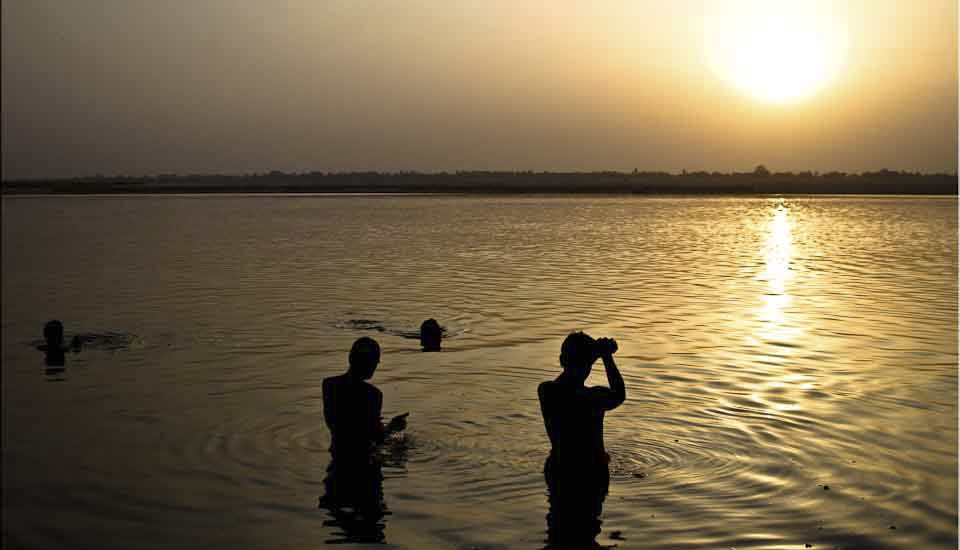.jpg)
The Temple Of Apollo
The Portara, a giant marble gateway built in 530 BCE, is all that remains of an unfinished temple dedicated to Apollo. Today, it is a popular sunset spot and frames the 13th century Venetian castle and the modern tourist city of Chora (Naxos), Greece.
The Greek island of Naxos is a joy to visit. It lived up to its reputation as destination with a fascinating history, fabulous scenery, and wonderfully fresh food.
Naxos‘ long history stretches back across time – and even before recorded time: the young god Zeus was reputed to have been raised here – and one story says that Ariadne, the Minoan princess who helped Theseus escape the labyrinth on Crete (see: The Minotaur, Mythology and an Ancient Palace), was abandoned here.
Even the more prosaic history dates almost 200,000 years in the form of early Neanderthal tools found on the island. The Bronze age Cycladic civilisation (3100–c. 1000 BCE) is evidenced to have thrived here. Later, around 500 BCE, Naxos was considered the most prosperous of the Greek islands. After its rule under the Byzantine Empire, it was regularly raided by the Saracens who left their artistic influences behind in 10th century frescoes. Like much of this area, Naxos was under the influence of the Venetians from the early 13th century, and a fortified castle and sections of walls from those times exist to this day. The Ottomans ruled from 1566 until the revolution of 1821; the island became a formal part of the Greek State in 1835.
The largest of the Cycladic islands, Naxos has ability to be self sufficient. It is the most fertile of the islands, and unlike the others, has a good supply of fresh water thanks to Mount Zeus (1004 metres or 3294 feet) acting as a raincloud-trap. Its rich and varied agriculture has led to a number of niche food products – some of which we tried: a delicious dinner of regional specialties on the first evening; an explanation and sampling of rich and flavoursome olive oils; a tasting of kitron, the unique local liqueur made from citron (Citrus Medica) leaves; and a lunch we prepared ourselves from organically grown produce (see: From the Farm to the Table).
Truly, the whole visit was a treat. Do come along:
.jpg)
Unloading into Naxos
We enjoyed a short morning crossing on the Blue Star Ferry from Paros (see: An Evening on Paros) to Naxos. (iPhone12Pro)
.jpg)
Golden Hour
Like every other place I stayed in Greece, the Galaxy Hotel on Saint George Beach in Naxos was a delight. (iPhone12Pro)

Greek Orthodox Church
In the evening, we took a stroll through the town of Naxos – also called Chora. Naturally, the local square features a typical blue and white church. (iPhone12Pro)

Evening on Naxos Harbour
The sun is catching the clouds over the water as we walk around the harbour …

Naxos from the Temple of Apollo
… … and across the narrow causeway to the islet of Palatia – the site of an unfinished Ancient Greek temple. (iPhone12Pro)

Dwarfed by the Gateway
The visitors to the site are dwarfed by the massive scale of the Portara. This giant marble doorway is the only remaining part of the unfinished Temple of Apollo. Built in 530 BCE, it stands around 6 metres (20 feet) high and 3.5 metres (11 feet) wide; each of the carved pillars weighs about 18 tonnes.

Sunset over the Aegean
According to one myth, this is the islet where Theseus abandoned Ariadne, the Minoan princess, after he killed the Minotaur on Crete (see: The Minotaur, Mythology and an Ancient Palace). Today, Palatia is a popular sunset spot. (iPhone12Pro)

Sundown on the Temple
The sun drops into the sea, and we head back to the main island for the night. (iPhone12Pro)

Old Olive Press
The next morning we drove to a nearby farming village and visited the small Eggares Olive Oil Museum.

Explaining the Press
There, we were given an explanation of traditional extraction methods, and better yet: plenty of different types of olive oil to sample.

View from the Bus
After our cooking class and lunch in Galini Village (see: From the Farm to the Table), we drove south towards Halki (Chalkio or Chalki) in the centre of the island. (iPhone12Pro)

The Historic Vallindras Kitron Distillery
Halki was once the capital and main trade centre of Naxos.

Old Equipment
Our first stop there was at the historic Vallindras Kitron Distillery …

Hostess
… where we are told the history of the distillery, and offered a tasting of kitron, the unique citrus liqueur made from the leaves of the local citron tree.

Church Tower
Halki is home to over 30 Byzantine churches. We took a short walk to one of them: the 11th century Church of Saint George Diasoritis.

Church of Saint George Diasoritis
This pretty little church was build to the cross-in-square or crossed-dome plan that was the predominant architectural style of its day. Basically, an internal structure shaped like a cross is topped with a dome.

The Diasoritis Church
The inside of the church is decorated with stone mouldings and priceless old frescos.

Old Olive Tree
This region – Tragea – is the centre of olive cultivation on the island. The church sits in a grove of very old trees.

Halki Lane
It is a short walk from the church back to town, following narrow lanes of houses …

Halki Street
… into cobbled streets full of shops and restaurants.

Herbs
It is hot, and the air is fragrant.

“Ring the Bells”
It was the ringing of the bells that drew me to the Church of Panagia Protothrone. This small whitewashed church is thought to have been built during the first half of the 9th century. (iPhone12Pro)

Halki Courtyard
You are never far from food and drink – providing the taverna or coffee shops aren’t observing the 2-5pm messimeri, or quiet time.

Sun over a Halki Street
The afternoon sun is still high and bouncing off the time-worn whitewashed walls as we leave the charming village behind and return to our bus.
So far, I was enchanted by this beautiful island – and I still had another day to explore its offerings.
 Until then,
Until then,
Happy Wandering!
Pictures: 21-22September2022



.jpg)


























.jpg)

